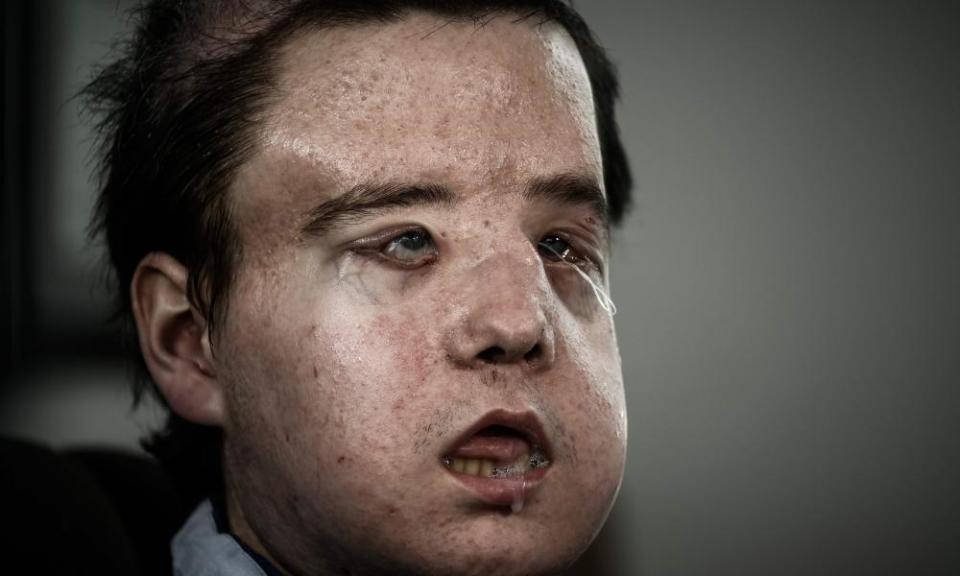French man becomes first person to have two face transplants
Jérôme Hamon’s first transplant in 2010 was eventually rejected
‘I feel very well in myself. I can’t wait to get rid of all this’

A French man is recovering in a Paris hospital after becoming the first person in the world to undergo two face transplants.
Jérôme Hamon, who suffers from a condition which causes disfiguring tumours, underwent his first transplant in 2010, but his body eventually rejected his new face which had to be removed.
He is now in a Paris hospital, three months after undergoing an unprecedented second transplant carried out by Laurent Lantieri, the same professor of plastic surgery who carried out the first procedure.
Hamon’s new face remains smooth and motionless, with his skull, skin and features yet to be fully aligned – a gradual process reliant on immunosuppressant drugs which, it is hoped, will prevent his body from rejecting the transplanted material.
“I feel very well in myself,” Hamon, 43, told reporters. “I can’t wait to get rid of all this,” he said.
Hamon suffers from neurofibromatosis type 1, a genetic mutation which causes severe disfiguration and related complications.
His first face transplant in 2010 was a success. But that same year – in order to treat a common cold – he was given an antibiotic incompatible with his immunosuppressive treatment.
In 2016 he began to display signs of transplant rejection, and his new face began to die, leading Lantieri to remove it.
That left Hamon without a face, a condition that Lantieri described as “the walking dead”. Hamon had no eyelids, no ears, no skin and could not speak or eat. He had limited hearing and could express himself only by turning his head slightly, in addition to writing a little.

“If you have no skin, you have infections,” Lantieri told the Associated Press on Tuesday. “We were very concerned about the possibility of a new rejection.”
Hamon remained in hospital without a face for two months, while a compatible donor was sought.
Eventually, a second face donor became available, and Lantieri and his team performed a second transplant in January.
Before undergoing the second transplant, doctors had to replace all of the blood in his body in a month-long procedure, to eliminate some potentially problematic antibodies from previous treatments.
“For a man who went through all this, which is like going through a nuclear war, he’s doing fine,” Lantieri said. He added that Hamon is now being monitored like any other face transplant patient.
Hamon’s first face was donated by a 60-year-old. With his second transplanted face, Hamon said he managed to drop a few decades.
“I’m 43. The donor was 22. So I’ve become 20 years younger,” Hamon joked on French television on Tuesday.
Despite all the anxiety and suffering, Hamon said he was a happy man again.
“The first transplant I accepted immediately. I thought ‘this is my new face’ and this time it’s the same,” he told AFP.
“If I hadn’t accepted this new face it would have been terrible. It’s a question of identity … But here we are, it’s good, it’s me.”
There have now been about 40 face transplants throughout the world since the first partial transplant was performed on Isabelle Dinoire in 2005. Her nose, lips, chin and parts of her cheeks had been removed after she was bitten by her dog.
This article includes material from AP and AFP

